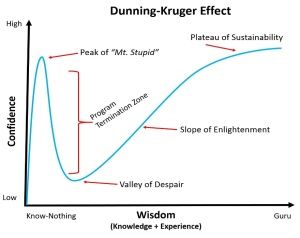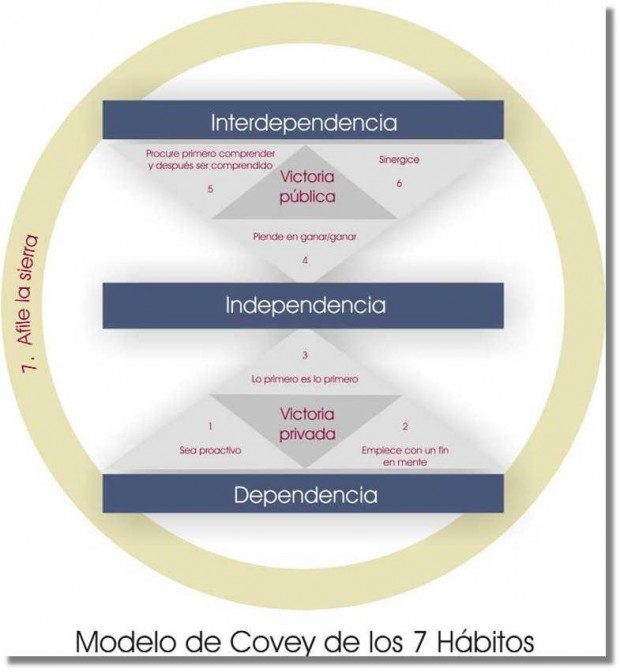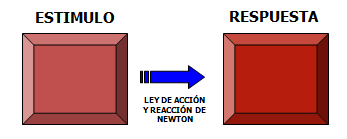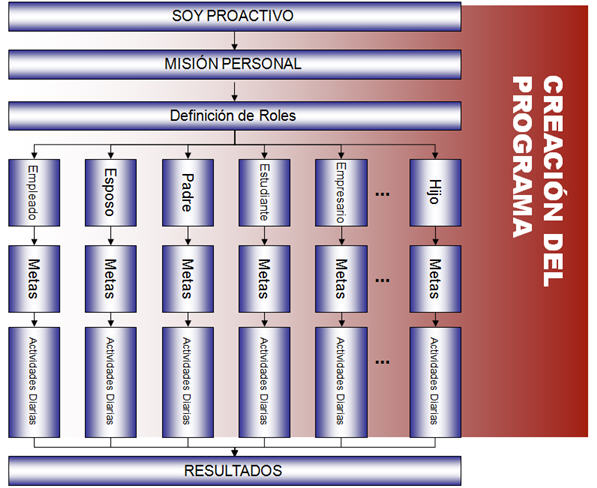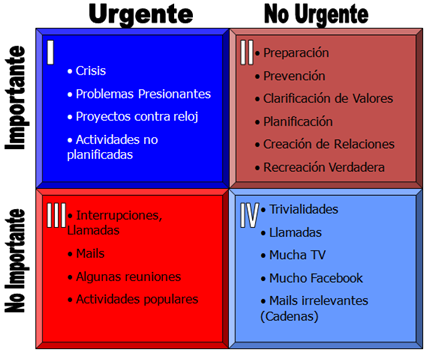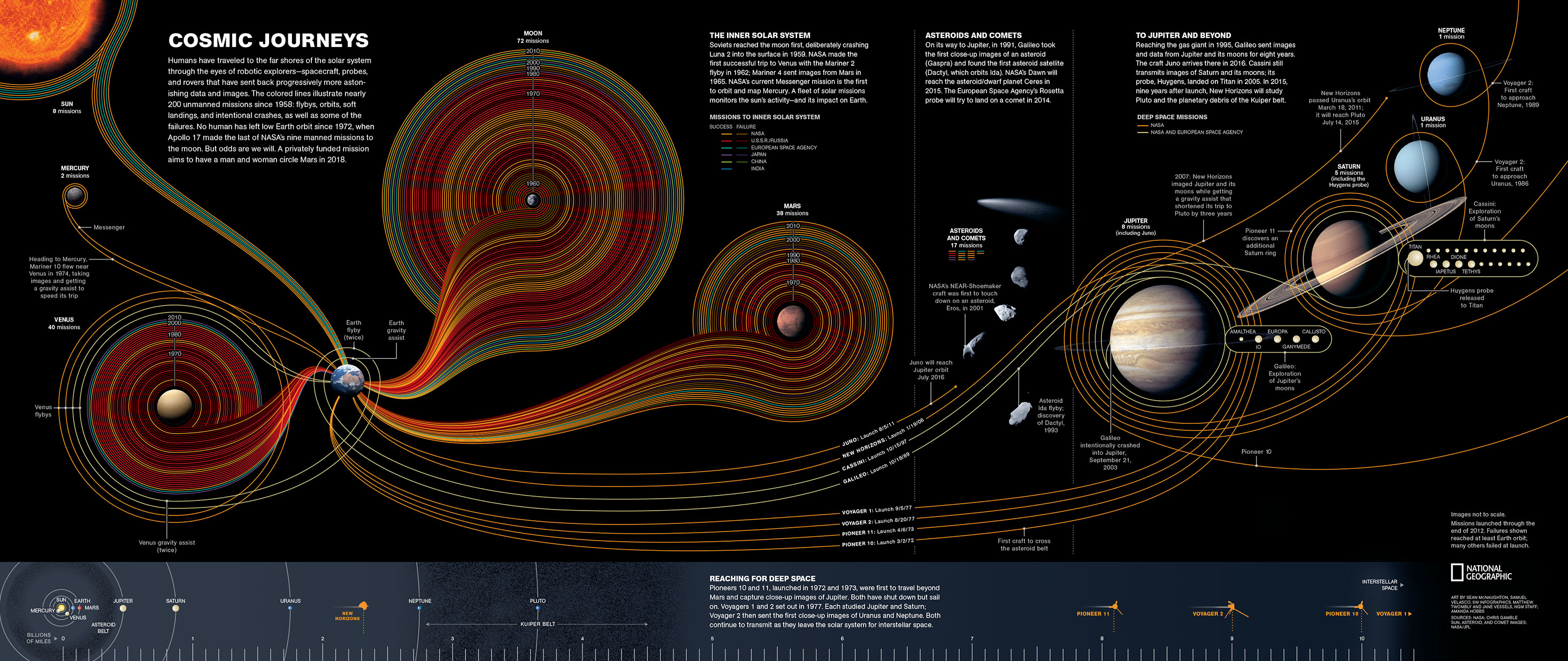![[cienciagy9.gif]](https://blogger.googleusercontent.com/img/b/R29vZ2xl/AVvXsEjnP5UFi6_5nMgFRmZKkVEwWKIQlUasqStmhbJQVInKIMyGA04-tspa-SfnFFNq25DkYHduU5z3-kZLY0C9m2sM8Q3fZAs9gypqObsdjLBxgxelIFZBQyUR9epAp9WjsvxJ-T_xWP44imw/s640/cienciagy9.gif)
sábado, 21 de mayo de 2016
Dunning-Kruger Effect
There can be quite a bit of confusion when you think about what the word “expertise” means. We all like to believe we have areas of expertise. However, sometimes, this leads to an over-estimation of our capacities. We fail to see our limits and how they might affect our results. A similar fairly painful outcome might happen when we only see the world from our professional lenses. Deformation Professionelle and the Dunning-Kruger Effect are cognitive biases related to expertise assessment that we have to be aware of and take action to prevent them from interfering with our work.
Let’s see how to do it!
Expertise is a matter of professional and personal pride. We need to demonstrate expertise to differentiate ourselves from other people who offer similar services and work that we do. It’s expertise that brings higher salaries than those who lack such expertise.
Sadly, there are times when expertise can obfuscate the way we see the world too. When that happens we can fail to think creatively or logically and we lower our levels of performance. Worse, this can impact on the user experience, the product and our clients too.
What is Deformation Professionelle?
Deformation professionelle (other than being a French term) is a cognitive bias. It stops us from seeing the world the way that most people see it. What it is, is a tendency to view the world through the eyes of our own profession. We stop seeing things as they are and see them only as a designer would view them.
This isn’t always a bad thing but it can be very limiting too. It’s a warning sign that we’ve become over-specialized in our approach. Not everything in life needs “design theory” applying to it and in fact, there are times when “design theory” is plain wrong in light of the facts.
There are situations when it’s better to take an intuitive or common approach to an idea or a problem or to tackle that problem from the perspective of an alternative profession.
When expertise runs wild; it can severely limit the way we solve problems and handle new ideas.
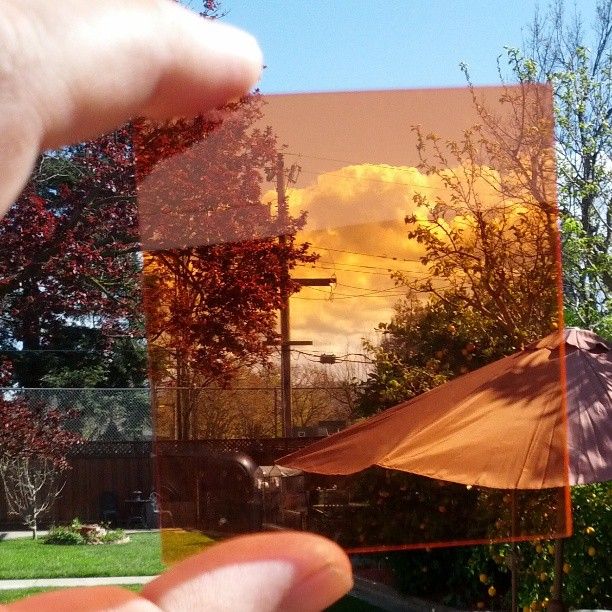
Author/Copyright holder: Kevin Marks. Copyright terms and licence: CC BY 2.0
What’s the Dunning-Kruger Effect?
The Dunning-Kruger effect appears at the other end of the expertise scale. It’s when we suffer from an illusion of expertise when in reality we’re not really all that skilled at something. In its worst form, it’s a belief that we’re good at everything because we’re good at something.
When people suffer from this bias – they have a tendency to massively over-estimate what their competence is in things that they’re not very good at.
The bias can also manifest when highly-skilled individuals (or experts as we call them) believe that because they have expertise and thus a task is easy to them; everyone has that expertise and thus the same task should be easier for others than it actually is.
How Do We Tackle These Biases?
If you find yourself prefacing your thoughts with; “Well design theory says…” or “It’s well known in design that…” you might want to take a step back and ask; “How would someone with no expertise see this?”
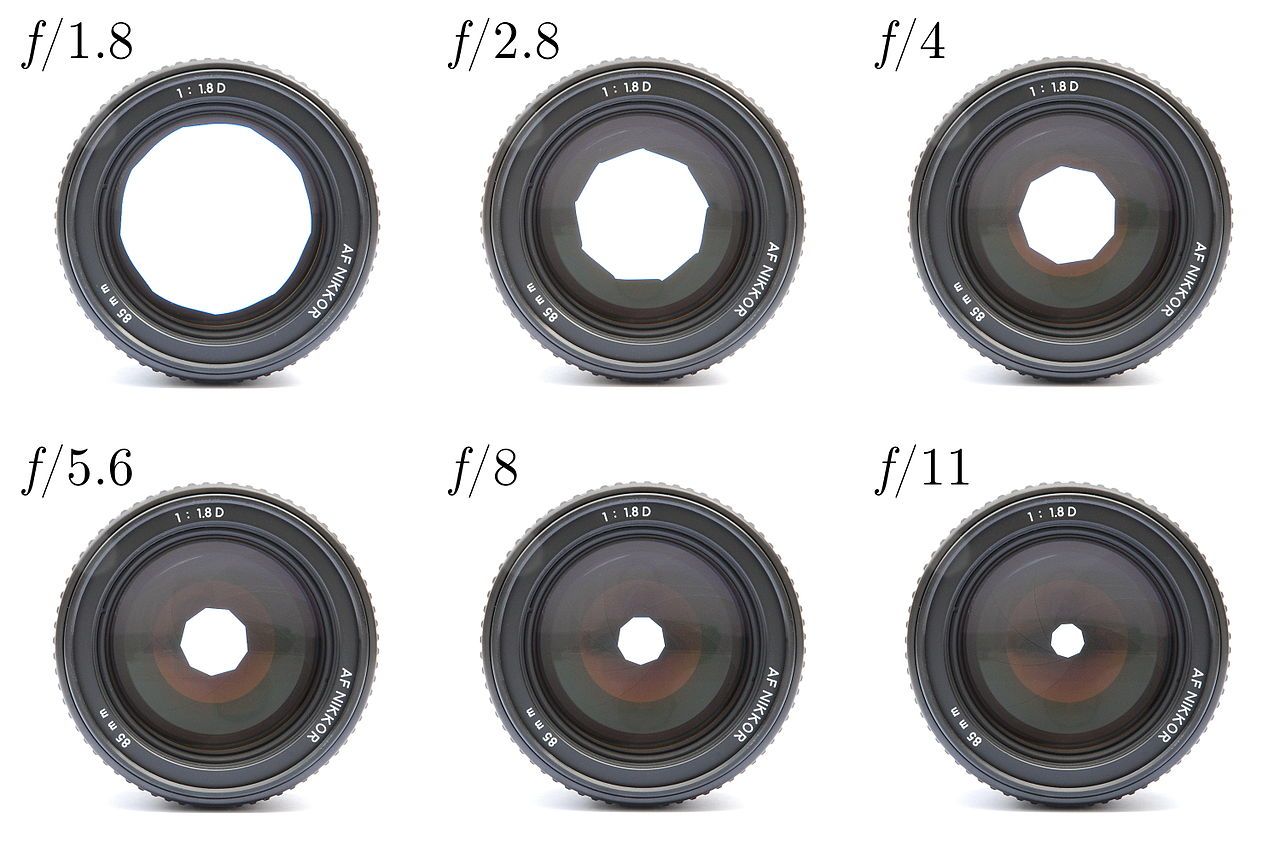
Author/Copyright holder: KoeppiK. Copyright terms and licence: CC BY-SA 3.0
You may then find yourself falling into the same trap as you progress through the process. Keep taking a step back and make sure you’re examining the problem through fresh eyes.
It can be harder to spot the Dunning-Kruger effect at play. You need to be able to ask yourself; “What do I really know about this situation?” and see if you’re over-estimating your ability to cope with a challenge and whether it needs a little more thought.
If you find that people around you are under-performing in your eyes; you might also want to ask “am I being fair?” Does the person actually have the expertise or should you be giving them more time to develop it?
As with all cognitive biases – tackling them by yourself can be incredibly challenging. That’s because we’re programmed (naturally) to not recognize our biases. You might want to consider enlisting the aid of a coach if you really want to rid yourself of these biases and become more effective.
The Take Away
Expertise can be extremely useful in our work; however, we shouldn’t become over-reliant on expertise – there are advantages to seeing the world with a fresh “non-design” pair of eyes at times. It can help us be more creative and get different perspectives on our work.
It’s also important not to become over-reliant on our image of ourselves as an expert. We cannot be expert at everything and we cannot expect others to always share our expertise either. Knowing when to differentiate these circumstances can make us better at what we do and make it easier for others to work with us.
Etiquetas:
Dunning-Kruger Effect
miércoles, 27 de abril de 2016
El principio de Pareto y los 7 habitos de las personas altamente efectivas
Un problema común entre muchas personas con responsabilidades es la sensación de falta de tiempo y acumulación de tareas. Esto conlleva en muchos casos alestrés, que puede afectar a nuestra propia salud. Hay que organizarse.
También tenemos que tener en cuenta que durante nuestra jornada de trabajo pasamos por momentos con distintos niveles de productividad y estrés. Es imposible mantener el nivel más alto de productividad durante muchas horas seguidas. Hay que respetar nuestros propios ciclos y aprovecharlos al máximo. Se podría decir que se cumple el principio de Pareto, en el que el 20% de tus esfuerzos son necesarios para realizar el 80% del trabajo. Aunque es evidente que es distinto para cada persona.

Tanto para finalizar las tareas, como para aumentar nuestra seguridad, existen herramientas muy útiles como la Matriz de Eisenhower. Recibe el nombre de Matiz de Eisenhower debido a que la usaba el presidente número 34 de los Estados Unidos, Dwight David “Ike” Eisenhower.
A continuación adjuntamos un ejemplo de matriz. Se trata de priorizar las tareas que tenemos que realizar según su importancia y su urgencia y ponerlas en el recuadro correspondiente.

Actualmente podéis encontrar múltiples aplicaciones tanto para navegadores web, móviles o ordenadores que te permiten gestionar tus tareas y crear listas o matrices como esta.
Los 7 Hábitos de las Personas Altamente Efectivas del Dr. Stephen Covey – Resumen
En el Principio Somos Individuos Dependientes
Todo parte del hecho que somos seres dependientes. Somos como niños. Crecemos con la mentalidad de que las cosas se nos deben dar, nuestros fracasos son culpa de otros y la vida es injusta. (Puedes revisar el artículo de las “5 Magníficas lecciones de Rocky Balboa” donde expreso en más detalle esta idea de la dependencia).
Si llegamos tarde, es culpa del tráfico. Si nos despiden, es culpa del jefe. Si tratamos mal a nuestra pareja, es porque él o ella nos sacó de nuestras casillas. La dependencia es un estado donde consideramos que somos víctimas de lo que nos sucede.
De la dependencia es donde parte todo. El gráfico de abajo muestra el concepto de los 7 hábitos y cómo necesitamos evolucionar desde la “dependencia” hacia la “independencia” (desarrollando los primeros 3 hábitos: Ser proactivo, Empezar con un fin en mente y Lo Primero es lo Primero).
Al llegar al estado de la independencia logramos lo que el Dr. Covey denomina la “Victoria Privada”. Experimentamos la “Victoria Privada” cuando aprendemos el autogobierno y la autodisciplina.
Hábito #1: Sea Proactivo:
Las personas reactivas atribuyen su conducta a tres factores fundamentales: Genético (características que heredamos), psicológico (educación, crianza) o ambiental (lo que nos rodea). Este tipo de personas son las que viven en base a la “Ley de Acción y Reacción” de Newton: Recibo un estímulo y reacciono dando una respuesta.
El lenguaje de las personas reactivas es: No puedo, yo soy así, me vuelve loco, no lo permitirán, me sacó de mis casillas, etc.
Las personas proactivas comprenden que entre el estímulo y la respuesta existe un espacio donde encuentra libertad para elegir la acción de acuerdo a sus valores.
Las personas proactivas asumen responsabilidad. Son personas de acción. Su lenguaje es: examinemos nuestras alternativas, busquemos un enfoque distinto, controlo mis sentimientos, elegiré la respuesta adecuada.
Una de las mejores expresiones de un ser proactivo fue la que mostró el Dr. Viktor Frankl. Entre los años 1942 y 1945 vivió un infierno siendo sometido a varios campos de concentración nazis, incluidos Auschwitz y Dachau. Sobre sus experiencias escribió:
“Los que vivimos en campos de concentración podemos recordar a los hombres que caminaban por las cabañas dando aliento a los demás, regalando su último pedazo de pan. Pueden haber sido pocos en número, pero ofrecen prueba suficiente de que se puede quitar todo a un hombre, excepto una cosa: la última de las libertades humanas – el poder elegir su propia actitud dado a cualquier tipo de circunstancia, el poder elegir su propio camino.”
Esto es ser proactivo: El poder elegir su propia actitud y respuesta ante cualquier circunstancia.
Habito #2: Empiece con un Fin en Mente:
Tal como dice Mary Shelley: “Nada contribuye tanto a tranquilizar la mente como un propósito estable – un punto donde el alma puede fijar su visión”
El segundo hábito parte del hecho que necesitas programar tu futuro. Necesitas ver claramente hoy cómo quieres que te recuerden cuando fallezcas. ¿Quieres que te recuerden como un buen padre o madre, un empresario honesto, una persona comprometida que cumple su palabra?
Para ello necesitas construir una Misión Personal:
La misión personal es un documento escrito donde expresas tu misión en esta vida. La misión personal normalmente no se crea sino se descubre basado en tu pasión, tus talentos y el profundo deseo de dejar una huella positiva en este mundo para ayudar a otros.
Luego que defines tu misión personal necesitas establecer los roles que son importantes para lograr tu misión (padre, madre, empresario, empleado, amigo, etc.) y colocar metas y actividades diarias que te lleven a cumplir tu misión en el largo plazo. El siguiente diagrama muestra el concepto de comenzar con el fin en mente y luego desarrollar tus actividades diarias intencionalmente para cumplir el propósito de tu vida:
Para una mayor información sobre cómo manejar tu tiempo puedes revisar el artículo “5 Principios del Manejo del Tiempo para Sentirse Pleno”.
Hábito #3: Pon Primero lo Primero:
El tercer hábito trata sobre la capacidad de priorizar las actividades en tu vida para enfocarte en lo realmente importante. Básicamente existen:
– Actividades Importantes: Son aquellas contribuyen con tu misión, valores y metas de alta prioridad.
– Actividades Urgentes: Necesitan atención inmediata.
Si hacemos una matriz que muestre las actividades de nuestro día divididas entre “Actividades importantes y no importantes” y “Urgentes y no urgentes” tenemos:
Lo que debemos buscar lograr es invertir la mayor parte de nuestro tiempo en el cuadrante II (Actividades Importantes y No Urgentes).
En las propias palabras de Stephen Covey: “La persona efectiva tiene crisis y emergencias en el Cuadrante I que requieren atención inmediata, pero el número es comparativamente pequeño… se mantienen en equilibrio enfocándose en lo importante, mas no en lo urgente” (Cuadrante II)
En conclusión, si logramos:
1- Ser Proactivos: No somos víctimas de la vida. Elegimos la actitud y la respuesta ante las circunstancias.
2- Empezamos con el Fin en Mente: Estamos claros con nuestra misión en la vida y enfocamos nuestras actividades diarias en pro de llevar a cabo nuestro propósito.
3- Ponemos Primero lo Primero: Priorizamos las actividades de nuestra vida. Proactivamente planificamos nuestra semana con el objetivo de minimizar crisis y emergencias e invertir nuestro mayor tiempo en las actividades importantes.
Llegaremos a experimentar la “Victoria Privada” a la que se refiere Covey. Nos convertiremos en individuos Independientes y con los fundamentos correctos para cimentar nuestra “Victoria Pública”.
Habito #4: Piensa en Ganar/Ganar:
En cualquier transacción en la vida, debemos pensar en ganar/ganar. Debemos buscar intencionalmente que ambas partes ganen. Bien sea las relaciones de pareja, negocios u otras relaciones, siempre salimos mejor si ambos ganamos. Cualquier otro tipo de transacción que no sea ganar/ganar es destructiva debido a que produce un perdedor. En consecuencia, produce enemigos, malos sentimientos, fracaso y hostilidad. Personas efectivas se convierten en los mejores multiplicando sus aliados, no sus enemigos.
Hábito #5: Busca Primero Comprender y después ser comprendido:
Si deseas desarrollar relaciones Ganar/Ganar recuerda que debes comprender muy bien qué es lo que la otra persona quiere y qué significa ganar para ellos. No asumas que sabes. Escucha. No te opongas a lo que escuchas, simplemente ponte en los zapatos del otro. Partiendo del principio que toda persona tiene una buena intención, comprender el punto de vista del otro te ayudará enormemente a lograr también tus objetivos. Esto se llama aplicar una comunicación empática.
Hábito #6: Sinergice:
Estoy seguro que has escuchado que el poder de un todo es mayor que el de las partes. Esto es lo que el Dr. Covey llama sinergia. Para lograr este estado es de suma importancia que exista una excelente comunicación en el equipo (Véase “Los 5 Aspectos de un Equipo Disfuncional” para mayor información). Los dos pilares de la sinergia son la comunicación y la cooperación. Para resumir: Escucha, reflexiona, responde y coopera.
Lograr desarrollar estos tres hábitos en tu vida te llevarán a la “Victoria Pública.” Cosechamos la Victoria Pública cuando construimos relaciones profundas, duraderas y efectivas. Esto nos lleva a la interdependencia.
Hábito #7: Afilar la Sierra:
Este hábito lo estás desarrollando ahora mismo mientras lees este artículo. Las personas altamente efectivas toman el tiempo para afilar sus herramientas, lo que se traduce en cultivar su:
- Cuerpo: Ejercitarse para desarrollar fortaleza, flexibilidad y resistencia física
- Alma: Oración y meditación. También leer una buena literatura, arte o música.
- Mente: Leer, educarse, investigar, aprender algo nuevo.
- Corazón: Trabajar en desarrollar una conexión emocional con otras personas.
Comunícate, escucha y no demandes innecesariamente. En todo lo que hagas trata de dejar a los demás mejor que antes de que te encontraran y colócalos primero. Haciendo esto, te transformarás en una persona altamente efectiva.
martes, 26 de abril de 2016
IA vs Progreso Humano

Evolucion IA
----------------------------------------------------------------------------------------------------------

Esfuerzo Humano
------------------------------------------------------------------------------------------------------------
Cronologia del tiempo graficamente
By Tim Urban
Humans are good at a lot of things, but putting time in perspective is not one of them. It’s not our fault—the spans of time in human history, and even more so in natural history, are so vast compared to the span of our life and recent history that it’s almost impossible to get a handle on it. If the Earth formed at midnight and the present moment is the next midnight, 24 hours later, modern humans have been around since 11:59:59pm—1 second. And if human history itself spans 24 hours from one midnight to the next, 14 minutes represents the time since Christ.
To try to grasp some perspective, I mapped out the history of time as a series of growing timelines—each timeline contains all the previous timelines (colors will help you see which timelines are which). All timeline lengths are exactly accurate to the amount of time they’re expressing.
A note on dates: When it comes to the far-back past, most of the dates we know are the subject of ongoing debate. For these timelines, it’s cumbersome to put a ~ sign before every ancient date or an asterisk explaining that the date is still being debated, so I just used the most widely accepted dates and left it at that.
For teachers and parents and people who hate cursing: here’s a clean, Rated G version.
Tu vida en Semanas, by Tim Urban
Your Life in Weeks
By Tim Urban
This is a long human life in years:
And here’s a human life in months:
But today, we’re going to look at a human life in weeks:
Each row of weeks makes up one year. That’s how many weeks it takes to turn a newborn into a 90-year-old.
It kind of feels like our lives are made up of a countless number of weeks. But there they are—fully countable—staring you in the face.
Before we discuss things further, let’s look at how a typical American spends their weeks:
There are some other interesting ways to use the weeks chart:
But how about your weeks?
Sometimes life seems really short, and other times it seems impossibly long. But this chart helps to emphasize that it’s most certainly finite. Those are your weeks and they’re all you’ve got.
Given that fact, the only appropriate word to describe your weeks is precious. There are trillions upon trillions of weeks in eternity, and those are your tiny handful. Going with the “precious” theme, let’s imagine that each of your weeks is a small gem, like a 2mm, .05 carat diamond. Here’s one:
If you multiply the volume of a .05 carat diamond by the number of weeks in 90 years (4,680), it adds up to just under a tablespoon.
Looking at this spoon of diamonds, there’s one very clear question to ask: “Are you making the most of your weeks?”
In thinking about my own weeks and how I tend to use them, I decided that there are two good ways to use a diamond:
1) Enjoying the diamond
2) Building something to make your future diamonds or the diamonds of others more enjoyable
In other words, you have this small spoonful of diamonds and you really want to create a life in which they’re making you happy. And if a diamond is not making you happy, it should only be because you’re using it to make other diamonds go down better—either your own in the future or those of others. In the ideal situation, you’re well balanced between #1 and #2 and you’re often able to accomplish both simultaneously (like those times when you love your job).
Of course, if a diamond is enjoyable but by enjoying it you’re screwing your future diamonds (anInstant Gratification Monkey specialty), that’s not so good. Likewise, if you’re using diamond after diamond to build something for your future, but it’s not making you happy and seems like a long-term thing with no end in sight, that’s not great either.
But the worst possible way to use a diamond is by accomplishing neither #1 nor #2 above. Sometimes “neither” happens when you’re in either the wrong career or the wrong relationship, and it’s often a symptom of either a shortage of courage, self-discipline, or creativity. Sometimes “neither” happens because of a debilitating problem.
We’ve all had Neither Weeks and they don’t feel good. And when a long string of Neither Weeks happens, you become depressed, frustrated, hopeless, and a bunch of other upsetting adjectives. It’s inevitable to have Neither Weeks, and sometimes they’re important—it’s often a really bad Neither Week that leads you to a life-changing epiphany—but trying to minimize your Neither Weeks is a worthy goal.
It can all be summed up like this:
The Life Calendar
One of the ways we end up in NeitherLand is by not thinking about things hard enough—so one of the most critical skills is continual reflection and self-awareness. Otherwise, you can fall into an unconscious rut and waste a bunch of precious diamonds.
To help both you and ourselves stay conscious and avoid NeitherLand, we’ve created a Life Calendar that lays out every week of your life on one sheet of paper. We don’t typically bring products into posts, but in this case, they go hand-in-hand.
The calendar is a 19″ by 27″ poster on high-quality poster paper, made to be written on and last for decades. It costs $15 and you can buy it here.
Besides the purpose of encouraging regular reflection, we hope the calendar can help you feel more oriented in your life, help you set goals and hold yourself to them, and remind you to be proud of yourself for what you’ve accomplished and grateful for the diamonds in your spoon.
How you use the calendar is totally open for creativity. Some possibilities:
- Highlight the weeks in the past in different colors to segment them into “life chapters”—i.e. High School, College, Job 1, Job 2, New City, Engagement, Marriage, etc., or maybe a whole other conception of what a life chapter means to you. You can also mark special boxes where key turning points happened.
- Write something in each week’s box as it goes by—the boxes are large enough to write a few words in with a sharp pencil.
- Plot out goals for the future by making a mark on a future box and visually seeing exactly how many weeks you have to get there.
- If you’re a new parent, it might be fun to make one for your child so they can look at it later and have some info on what happened in the first few years of their life.
- Or maybe you’d rather leave it totally untouched.
Both the week chart above and the life calendar are a reminder to me that this grid of empty boxes staring me in the face is mine. We tend to feel locked into whatever life we’re living, but this pallet of empty boxes can be absolutely whatever we want it to be. Everyone you know, everyone you admire, every hero in history—they did it all with that same grid of empty boxes.
The boxes can also be a reminder that life is forgiving. No matter what happens each week, you get a new fresh box to work with the next week. It makes me want to skip the New Year’s Resolutions—they never work anyway—and focus on making New Week’s Resolutions every Sunday night. Each blank box is an opportunity to crush the week—a good thing to remember.
By Tim Urban
This is a long human life in years:
And here’s a human life in months:
But today, we’re going to look at a human life in weeks:
Each row of weeks makes up one year. That’s how many weeks it takes to turn a newborn into a 90-year-old.
It kind of feels like our lives are made up of a countless number of weeks. But there they are—fully countable—staring you in the face.
Before we discuss things further, let’s look at how a typical American spends their weeks:
There are some other interesting ways to use the weeks chart:
But how about your weeks?
Sometimes life seems really short, and other times it seems impossibly long. But this chart helps to emphasize that it’s most certainly finite. Those are your weeks and they’re all you’ve got.
Given that fact, the only appropriate word to describe your weeks is precious. There are trillions upon trillions of weeks in eternity, and those are your tiny handful. Going with the “precious” theme, let’s imagine that each of your weeks is a small gem, like a 2mm, .05 carat diamond. Here’s one:
If you multiply the volume of a .05 carat diamond by the number of weeks in 90 years (4,680), it adds up to just under a tablespoon.
Looking at this spoon of diamonds, there’s one very clear question to ask: “Are you making the most of your weeks?”
In thinking about my own weeks and how I tend to use them, I decided that there are two good ways to use a diamond:
1) Enjoying the diamond
2) Building something to make your future diamonds or the diamonds of others more enjoyable
In other words, you have this small spoonful of diamonds and you really want to create a life in which they’re making you happy. And if a diamond is not making you happy, it should only be because you’re using it to make other diamonds go down better—either your own in the future or those of others. In the ideal situation, you’re well balanced between #1 and #2 and you’re often able to accomplish both simultaneously (like those times when you love your job).
Of course, if a diamond is enjoyable but by enjoying it you’re screwing your future diamonds (anInstant Gratification Monkey specialty), that’s not so good. Likewise, if you’re using diamond after diamond to build something for your future, but it’s not making you happy and seems like a long-term thing with no end in sight, that’s not great either.
But the worst possible way to use a diamond is by accomplishing neither #1 nor #2 above. Sometimes “neither” happens when you’re in either the wrong career or the wrong relationship, and it’s often a symptom of either a shortage of courage, self-discipline, or creativity. Sometimes “neither” happens because of a debilitating problem.
We’ve all had Neither Weeks and they don’t feel good. And when a long string of Neither Weeks happens, you become depressed, frustrated, hopeless, and a bunch of other upsetting adjectives. It’s inevitable to have Neither Weeks, and sometimes they’re important—it’s often a really bad Neither Week that leads you to a life-changing epiphany—but trying to minimize your Neither Weeks is a worthy goal.
It can all be summed up like this:
The Life Calendar
One of the ways we end up in NeitherLand is by not thinking about things hard enough—so one of the most critical skills is continual reflection and self-awareness. Otherwise, you can fall into an unconscious rut and waste a bunch of precious diamonds.
To help both you and ourselves stay conscious and avoid NeitherLand, we’ve created a Life Calendar that lays out every week of your life on one sheet of paper. We don’t typically bring products into posts, but in this case, they go hand-in-hand.
The calendar is a 19″ by 27″ poster on high-quality poster paper, made to be written on and last for decades. It costs $15 and you can buy it here.
Besides the purpose of encouraging regular reflection, we hope the calendar can help you feel more oriented in your life, help you set goals and hold yourself to them, and remind you to be proud of yourself for what you’ve accomplished and grateful for the diamonds in your spoon.
How you use the calendar is totally open for creativity. Some possibilities:
- Highlight the weeks in the past in different colors to segment them into “life chapters”—i.e. High School, College, Job 1, Job 2, New City, Engagement, Marriage, etc., or maybe a whole other conception of what a life chapter means to you. You can also mark special boxes where key turning points happened.
- Write something in each week’s box as it goes by—the boxes are large enough to write a few words in with a sharp pencil.
- Plot out goals for the future by making a mark on a future box and visually seeing exactly how many weeks you have to get there.
- If you’re a new parent, it might be fun to make one for your child so they can look at it later and have some info on what happened in the first few years of their life.
- Or maybe you’d rather leave it totally untouched.
Both the week chart above and the life calendar are a reminder to me that this grid of empty boxes staring me in the face is mine. We tend to feel locked into whatever life we’re living, but this pallet of empty boxes can be absolutely whatever we want it to be. Everyone you know, everyone you admire, every hero in history—they did it all with that same grid of empty boxes.
The boxes can also be a reminder that life is forgiving. No matter what happens each week, you get a new fresh box to work with the next week. It makes me want to skip the New Year’s Resolutions—they never work anyway—and focus on making New Week’s Resolutions every Sunday night. Each blank box is an opportunity to crush the week—a good thing to remember.
Suscribirse a:
Entradas (Atom)
